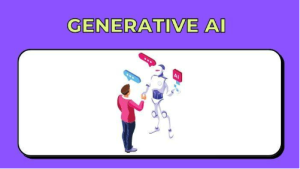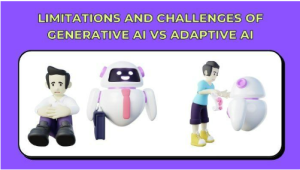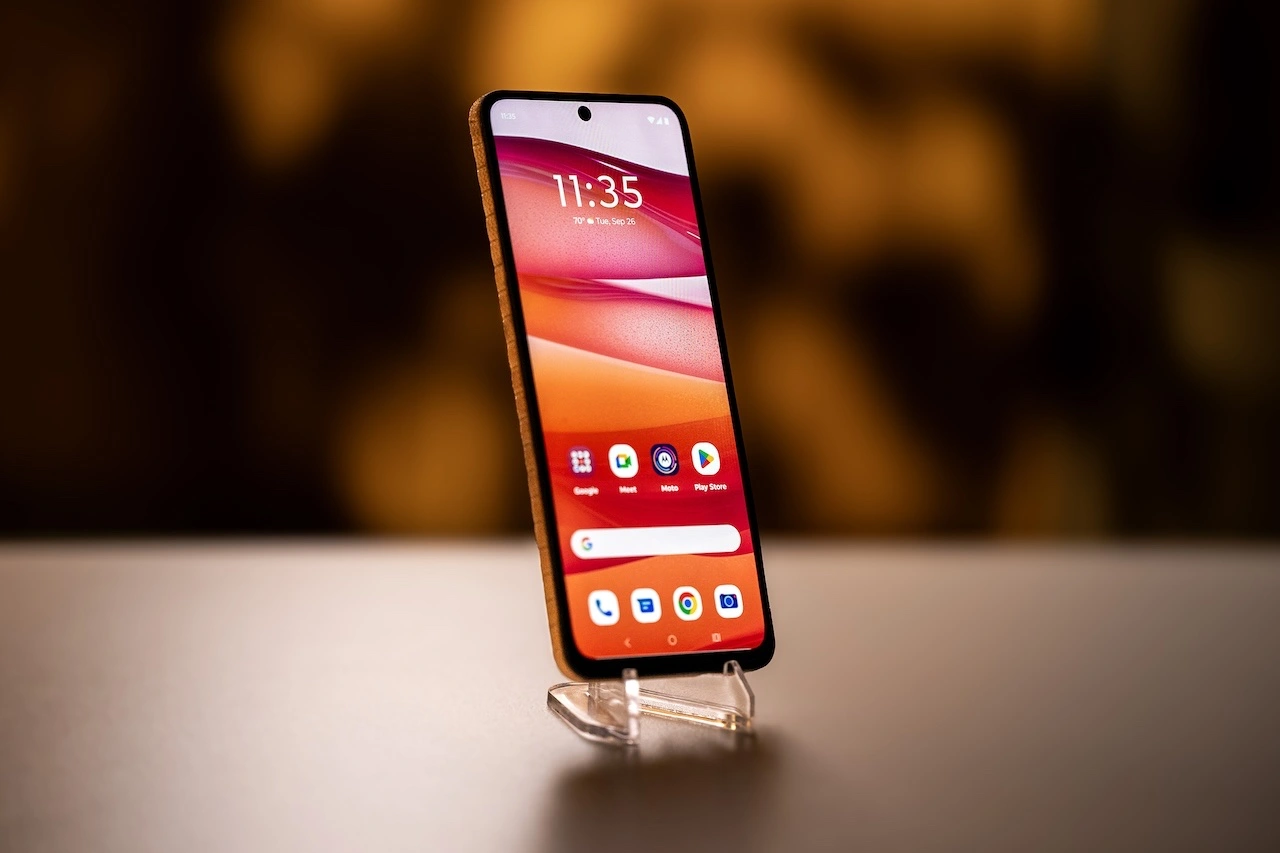Introduction
“Unveiling the Battle: Generative AI vs Adaptive AI”
Artificial Intelligence (AI) is a rapidly evolving field, with two main approaches capturing attention: Generative AI and Adaptive AI. These techniques offer unique capabilities and have the potential to revolutionize various industries.
In this article, we will explore the fundamental principles, methodologies, applications, limitations, ethical considerations, and prospects of Generative AI and Adaptive AI. By gaining a deeper understanding of these approaches, readers will be better equipped to assess their relevance and make informed decisions.
Understanding Generative AI
“The Power of Creation: How Generative AI Works”
Generative AI focuses on the creation of new and original content. It utilizes advanced algorithms, such as deep learning models and recurrent neural networks, to learn patterns from vast datasets and generate outputs resembling human-created content.
From generating artwork to composing music, Generative custom AI development company enables creative expression and pushes the boundaries of what machines can achieve. By comprehending the workings of Generative AI, we can appreciate its potential for innovative applications.
Generative AI: Average Cost to Build
The cost to develop generative AI can range from tens of thousands to several hundred thousand dollars, depending on project complexity and scope.
According to industry statistics, the average cost to build generative AI systems can be estimated as follows:
- Small-scale projects: $30,000 – $50,000
- Medium-scale projects: $50,000 – $100,000
- Large-scale projects: $100,000 – $500,000
According to Forbes, Generative AI Breaks The Data Center: Data Center Infrastructure And Operating Costs Projected To Increase To Over $76 Billion By 2028.
Exploring Adaptive AI
“Adaptability at Its Finest: Understanding Adaptive AI”
Adaptive AI emphasizes the ability of AI systems to learn and adapt based on feedback and changing circumstances. Through techniques like reinforcement learning and evolutionary algorithms, Adaptive AI models improve their performance by continuously acquiring knowledge and adjusting their behavior.
This approach finds applications in dynamic environments where flexibility and responsive decision-making are crucial. By diving into Adaptive AI, we can grasp its adaptive mechanisms and impact on various domains.
Average Cost to Build Adaptive AI: Statistics
The average cost to build adaptive AI can range from $500,000 to several million dollars.
According to industry statistics, the average cost to build adaptive AI systems can be estimated as follows:
- Small-scale projects: $500,000 – $1,000,000
- Medium-scale projects: $1,000,000 – $5,000,000
- Large-scale projects: $5,000,000 and above
According to Gartner: Gartner expects that by 2026, enterprises that have adopted AI engineering practices to build and manage adaptive AI systems will outperform their peers in the number and time it takes to operationalize artificial intillegence models by at least 25%.
Comparing the Approaches: Generative AI vs. Adaptive AI
“Head-to-Head: Generative AI vs Adaptive AI”
Let’s compare the key aspects of Generative AI and Adaptive AI in a concise bullet point format:

Generative AI
- Focuses on creating new and original content.
- Utilizes algorithms like deep learning models and recurrent neural networks.
- Learns patterns from vast datasets to generate human-like output.
- Thrives in creative domains such as art, music, and writing.
- Pushes the boundaries of machine-generated creativity.
Adaptive AI
- Emphasizes learning and adaptability in dynamic environments.
- Utilizes techniques like reinforcement learning and evolutionary algorithms.
- Improves performance through continuous learning and adjustment.
- Excels in tasks that require flexibility and responsive decision-making.
- Finds applications in optimization, prediction, and personalization.
Factors Influencing Cost
Several key factors influence the cost of developing both generative AI and adaptive AI systems. These factors include:
- Data Acquisition and Preparation: The quality and quantity of data needed for training AI models significantly impact the cost. Collecting and curating large datasets can require considerable resources.
- Computing Resources and Infrastructure: Training and running AI models demand substantial computing power, often requiring specialized hardware and cloud services. The cost of acquiring and maintaining the necessary infrastructure contributes to the overall expenses.
- Expertise and Talent: Skilled AI professionals with expertise in generative AI or adaptive AI are essential for successful development. Hiring and retaining these experts can be a significant investment.
- Research and Development: Staying at the forefront of AI technology requires ongoing research and development efforts. Investing in R&D helps organizations remain competitive and ensures continuous improvement of AI systems.
Use Cases and Applications
“Real-World Implications: Where Generative AI and Adaptive AI Excel”
Use Cases and Applications of Generative AI:
Generative AI has found diverse applications across industries, including:
- Computer-generated art and design
- Music composition and generation
- Creative writing and storytelling
- Virtual and augmented reality experiences
- Product and logo design
- Fashion and textile design
- Video game content generation
- Content creation for marketing and advertising
Generative AI enables creative professionals and industries to explore new realms of artistic expression and leverage the power of AI to generate unique and compelling content.
Use Cases and Applications of Adaptive AI:
Adaptive AI has demonstrated its value in various domains, including:
- Personalized recommendations in e-commerce and streaming platforms
- Dynamic pricing and demand forecasting in retail and hospitality
- Fraud detection and risk assessment in finance and insurance
- Autonomous vehicles and intelligent transportation systems
- Predictive maintenance in manufacturing and logistics
- Healthcare diagnostics and personalized treatment plans
- Natural language processing and chatbots for customer service
- Personalized learning and adaptive education platforms

Limitations and Challenges of Generative AI vs Adaptive AI
“Roadblocks and Hurdles: The Limitations of Generative AI and Adaptive AI”
Limitations and Challenges of Generative AI
Limitations of Generative AI:
- Maintaining consistent quality and coherence in generated content is a challenge.
- Ensuring genuine creativity and originality in output can be difficult.
- Generative AI heavily relies on high-quality and diverse training data.
- Evaluation and validation of generated content can be subjective and challenging.
- Long training times and resource-intensive computational requirements can limit scalability.
Challenges of Generative AI:
- Ethical considerations arise regarding ownership and potential misuse of AI-generated content.
- Limited control over output and interpretability can lead to unpredictable results.
- Balancing exploration and exploitation in the learning process poses a challenge.
- Generating high-quality and realistic content is an ongoing challenge for generative AI systems.
- Addressing biases and ensuring fairness in AI-generated content is a complex task.
Limitations and Challenges of Generative AI
Limitations of Adaptive AI:
- Dependence on the training data’s quality, relevance, and representativeness for effective learning and adaptation.
- Vulnerability to bias and skewed outcomes if the training data is unbalanced or contains inherent biases.
- Ethical concerns related to privacy, transparency, and potential reinforcement of societal biases.
- Complex implementation and tuning processes require careful calibration and monitoring.
- Balancing the need for adaptability with the need for stability and reliability in critical decision-making scenarios.
Challenges of Adaptive AI:
- Ensuring continuous learning and adaptation in dynamic and evolving environments.
- Overcoming the limitations of data availability and quality for effective model updates.
- Adapting to changing user preferences and behaviors in personalized recommendation systems.
- Addressing the “cold start” problem when dealing with new or rare instances.
- Balancing exploration and exploitation to achieve optimal performance in reinforcement learning scenarios.
Big Companies Using Adaptive AI Technology
Big companies are leveraging generative and adaptive AI technologies to gain a competitive edge and deliver exceptional experiences. Here are notable examples:
- Google’s DeepMind: DeepMind’s language models like GPT-3 generate human-like text, enabling content creation and virtual assistants.
- Netflix: Adaptive AI personalizes the user experience, recommending tailored content based on viewing patterns and preferences.
- Amazon: Alexa uses generative AI for natural-sounding responses, while adaptive AI powers product recommendations.
- Adobe: Adobe Sensei’s generative AI features automate design variations and enhance graphics creation.
- Facebook: Generative AI generates alternative text for images, while adaptive AI personalizes news feeds.
Big Companies Using Generative AI Technology
Let’s explore some notable examples of how these technologies are being utilized by prominent organizations:
- IBM: IBM’s Watson AI platform utilizes generative AI to generate natural language responses, engage in intelligent conversations, and assist in various domains such as healthcare, finance, and customer service.
- OpenAI: OpenAI’s language models like GPT-3 are employed by big companies to generate content, draft emails, provide customer support, and create chatbots.
- Autodesk: Autodesk’s generative design tools use AI algorithms to explore numerous design options and help professionals optimize their designs and generate innovative solutions.
- NVIDIA: NVIDIA’s generative AI solutions, such as generative adversarial networks (GANs), are used in image generation for design, advertising, and virtual environments.
- Adobe: Adobe incorporates generative AI into its creative software suite, enabling artists, designers, and content creators to enhance images, remove unwanted elements, and automatically generate content.
The Future of AI:
“Beyond the Present: The Evolution of Generative AI and Adaptive AI”
The future of AI holds exciting possibilities as Generative AI and Adaptive AI continue to evolve. The evolution of Generative AI and Adaptive AI shapes the future of AI.
- Generative AI is advancing to produce highly creative and original content.
- Adaptive AI focuses on adaptability and responsiveness, enabling personalized experiences.
- The convergence of Generative AI and Adaptive AI holds immense promise.
- Hybrid models combining creativity and adaptability will revolutionize industries.
- Privacy, fairness, and transparency are essential considerations in the future of AI.
- Ongoing research and collaboration are crucial for addressing ethical challenges.
- The future of AI promises a transformative world of innovation and possibilities.
Conclusion:
“Choosing Your Path: Which AI Approach is Right for You?”
When considering AI, the choice between Generative AI and Adaptive AI depends on individual requirements and objectives. Generative AI suits those seeking creative exploration, while Adaptive AI suits those valuing adaptability and personalization. As the AI landscape evolves, hybrid models may emerge, providing the best of both worlds. Embrace the future of AI and select the path that aligns with your goals to drive innovation and transformative change.








